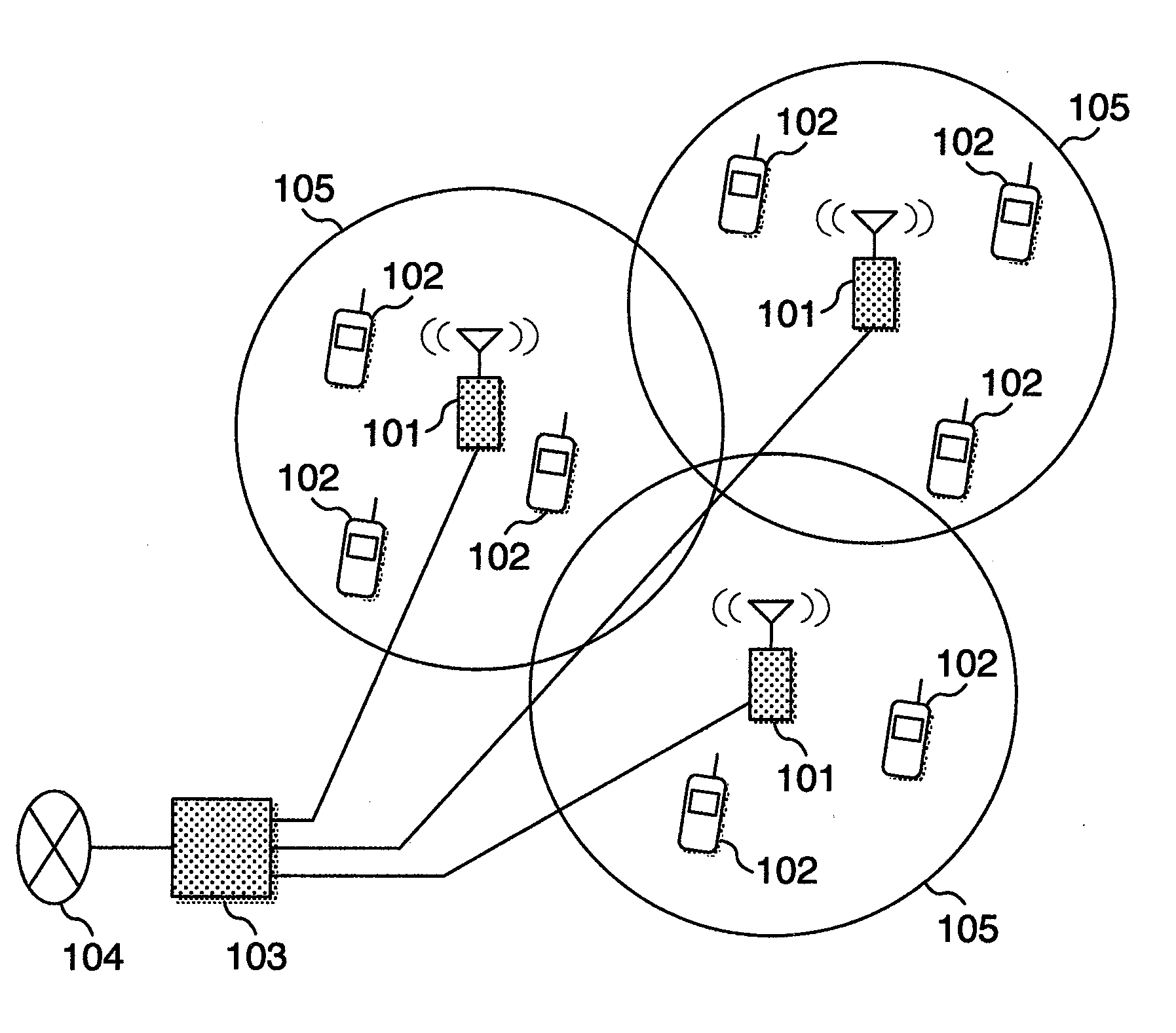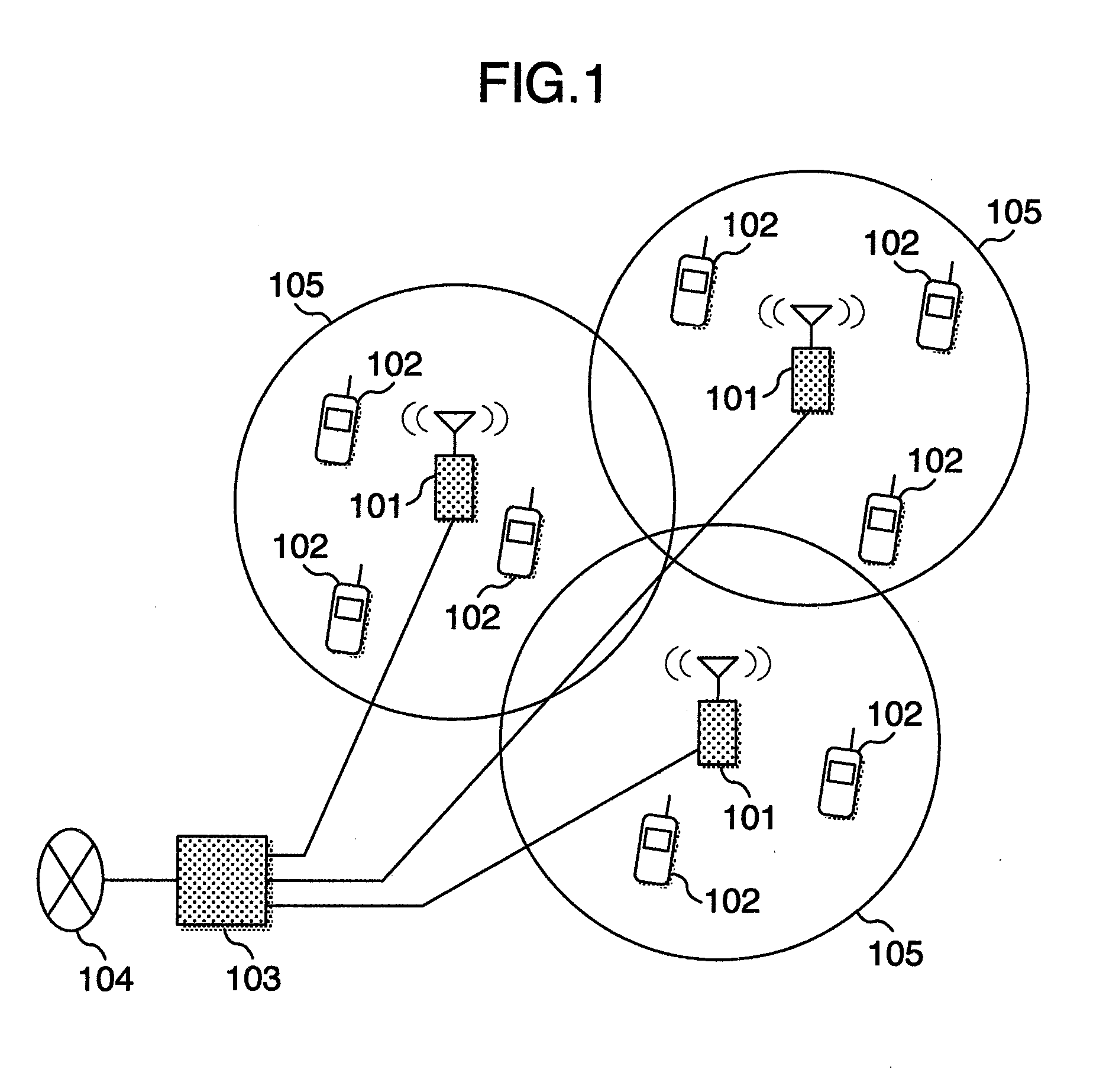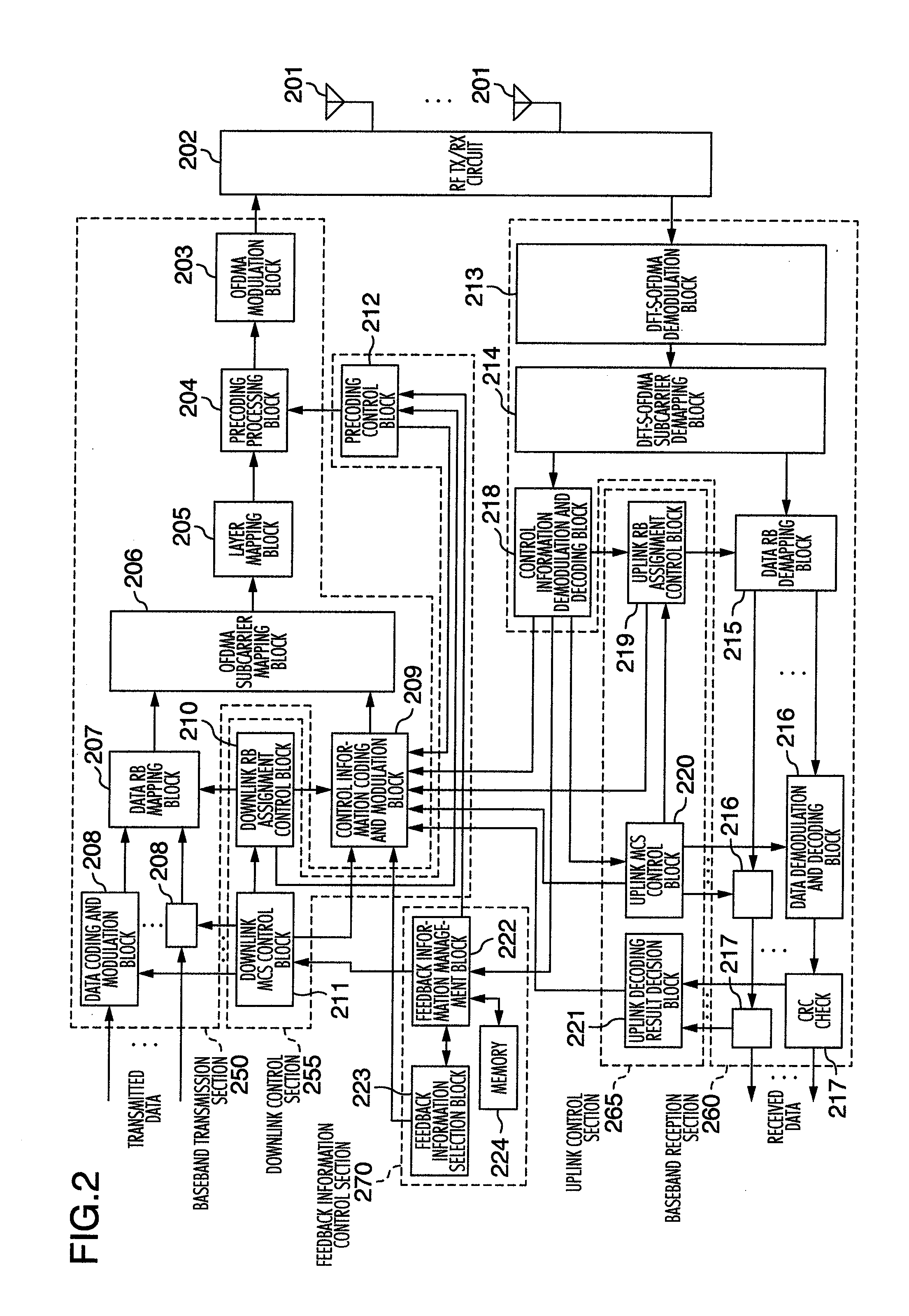Radio communication system, base station and mobile station
a radio communication system and mobile station technology, applied in wireless communication, transmission path division, signalling characterisation, etc., can solve the problems of unwanted decreases in uplink throughputs, the risk of a decrease in uplink throughput, etc., to increase the overhead of uplink, avoid or at least greatly suppress throughput deterioration, and increase or maximize the accuracy of scheduling process
- Summary
- Abstract
- Description
- Claims
- Application Information
AI Technical Summary
Benefits of technology
Problems solved by technology
Method used
Image
Examples
example 1
[0066]A first example of the above-stated embodiment will be explained using FIG. 12. In the first example, the feedback information will be explained by exemplifying a subband channel quality indicator (CQI) and a wideband CQI. In a case where the subband CQI is better than the wideband CQI by a degree greater than or equal to a predetermined level, the base station 101 causes the subband CQI to be periodically fed back to a mobile station 102; if this is not the case, the subband CQI is prevented from being periodically fed back to the mobile station.
[0067]FIG. 12 is a flow diagram showing one example of the procedure in the base station 101 for determination of which one of the wideband CQI and the subband CQI should be selected as the CQI to be periodically fed back from mobile station 102, based on a difference between the wideband CQI and subband CQI. In FIG. 12, the base station 101 acquires respective ones of the subband CQI and wideband CQI from the mobile station (at step ...
example 2
[0069]A second example of the illustrative embodiment will be described with reference to FIG. 13. In the second example, in a case where a difference between two or more subband channel quality indicators (CQIs) is greater than or equal to a predefined level, the base station 101 causes mobile station 102 to feed back a subband CQI periodically; if this is not the case, the base station 101 instructs mobile station 102 to stop periodical feedback of the subband CQI.
[0070]FIG. 13 is a flow diagram showing one example of the procedure in the base station 101 for determining, based on a difference between or among a plurality of subband CQIs, which one of the wideband CQI and subband CQI should be chosen as the CQI to be periodically fed back thereto from mobile station 102. In FIG. 13, the base station has acquired a plurality of subband CQI indicators from a mobile station(s), respectively (at step 1310). The base station calculates a difference between any two of the plurality of s...
example 3
[0072]A third example applying thereto the illustrative embodiment will be described with reference to FIG. 14. In the third example, in a case where the base station 101 does not cause the mobile station 102 to perform the periodic subband CQI feedback, the base station 101 forces the subband CQI to be fed back aperiodically.
[0073]FIG. 14 is a flow diagram showing one example of the procedure in the base station 101 for determining acquisition of subband CQI from mobile station 102 by the aperiodic feedback scheme in case the subband CQI is not fed back periodically. In FIG. 14, the base station 101 first performs determination as to whether the subband CQI is acquired by the periodic feedback scheme (at step 1410). This determination can be done, for example, by a method similar to that explained in the first and second examples. Thereafter, the base station 101 judges whether a decision is made to acquire the subband CQI by the periodic feedback scheme (at step 1420). In case a d...
PUM
 Login to View More
Login to View More Abstract
Description
Claims
Application Information
 Login to View More
Login to View More - R&D
- Intellectual Property
- Life Sciences
- Materials
- Tech Scout
- Unparalleled Data Quality
- Higher Quality Content
- 60% Fewer Hallucinations
Browse by: Latest US Patents, China's latest patents, Technical Efficacy Thesaurus, Application Domain, Technology Topic, Popular Technical Reports.
© 2025 PatSnap. All rights reserved.Legal|Privacy policy|Modern Slavery Act Transparency Statement|Sitemap|About US| Contact US: help@patsnap.com



